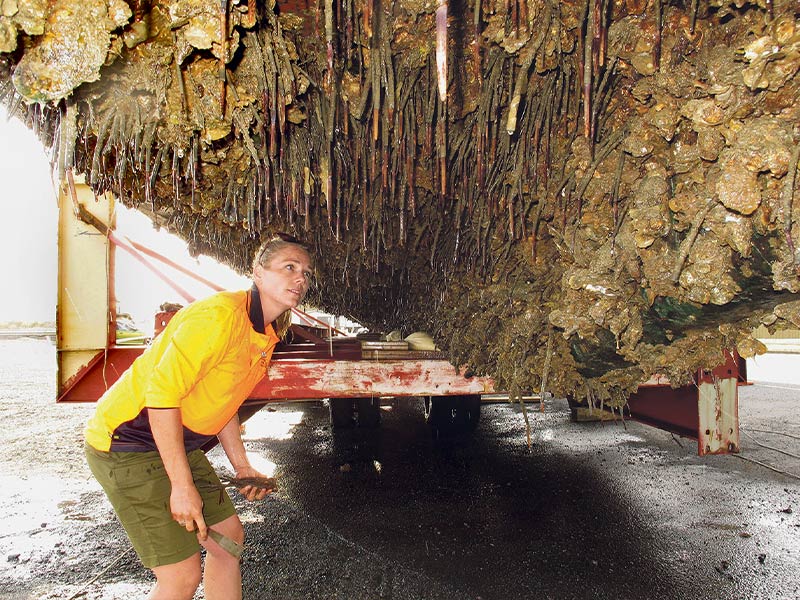Marine pest surveys start in Waikato coastal marine areas
2 min read
An example of an infected hull keel and starboard side. Photo: Supplied
A team of divers has begun surveying the Waikato’s coastal marine areas to determine the presence and extent of marine pest species.
Starting in the Coromandel Peninsula, the biosecurity surveillance work targets marine pests Mediterranean fanworm (Sabella spallanzanii) and clubbed tunicate (Styela clava) in particular.
The divers will then move on to the west coast Port Waikato, Raglan, and Kawhia harbours.
The team will target pathways of boats and check vessels, marine structures (marinas, wharves, jetties, and moorings), popular anchoring spots and mussel and oyster farms, and if infested vessels are found, owners may be requested to remove and antifoul them.
Previous surveys have shown the west coast harbours and the eastern side of the Coromandel to be free of marine pests, however, pests have been found on the west coast of the peninsula, Waikato Regional Council said.
“The natural spread of Mediterranean fanworm is continuing up the coast from the Coromandel Harbour. At the time of the last survey, in 2018/19, fanworm was found as far north as Colville, up from Papa Aroha the previous two years.
“This surveillance period, the dive team will be keeping an eye out for the invasive seaweed Caulerpa parvifolia after it was discovered off the coast of Ahuahu/Great Mercury Island last year.
“The Council regularly checks for marine pests to see how much of a problem they are. Please help prevent their spread: make sure your hull has been checked, cleaned, and antifouled before heading away.”
CAN and Rāhui

To minimise the spread of Caulerpa species, Biosecurity New Zealand has placed a Controlled Area Notice (CAN) on three affected harbours at Great Barrier Island (Blind Bay, Tryphena Harbour, and Whangaparapara) and the western bay of Ahuahu Great Mercury Island. Mana whenua have imposed a rāhui in the same areas. The CAN and rāhui are in place until 30 September 2022.
“Biosecurity New Zealand is reviewing all information gathered on Caulerpa brachypus and Caulerpa parvifolia since they were discovered in New Zealand a year ago. The review will inform future controls to best manage the risk of spread while taking into account the effect of any requirements on communities and other marine users,” Waikato Regional Council said.
To find out more about Biosecurity New Zealand’s Caulerpa response and what the CAN and rāhui mean for recreational water users, visit mpi.govt.nz.



